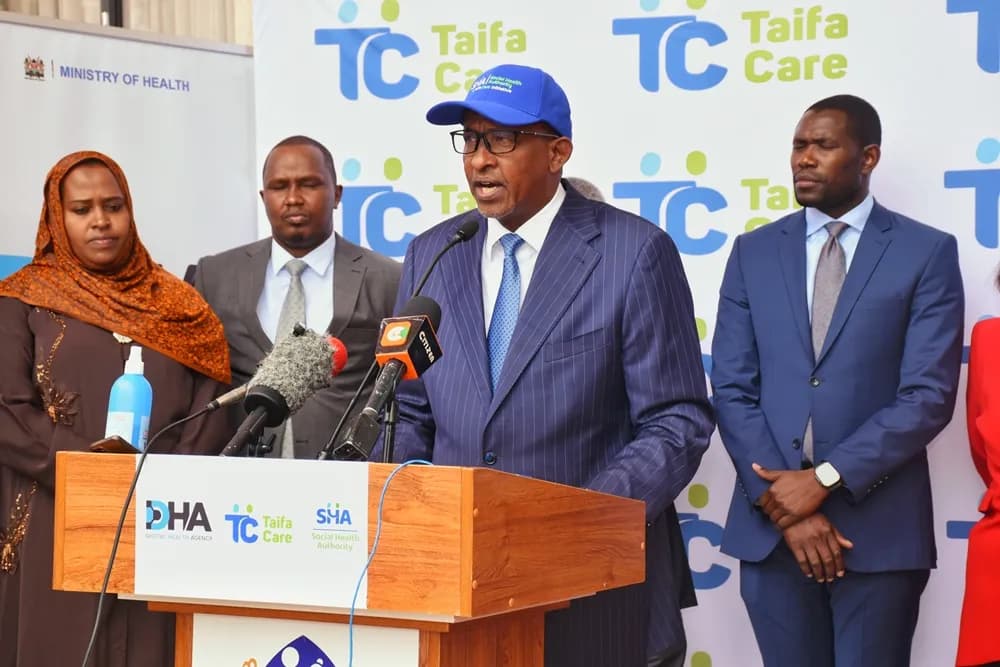We're loading the full news article for you. This includes the article content, images, author information, and related articles.
The government's new health scheme surpasses a key milestone, but the transition from NHIF to SHA is marked by implementation challenges, including public confusion and provider payment delays, raising questions about the pace and sustainability of the universal healthcare drive.

Kenya's ambitious healthcare overhaul has reached a significant milestone, with the Social Health Authority (SHA) registering over 27 million Kenyans as of Friday, October 24, 2025. Health Cabinet Secretary Aden Duale confirmed the figure, stating that all 27,007,879 registrants now possess valid Free Primary Health Care insurance under the new system. This development comes just under a year after the SHA officially replaced the long-standing National Health Insurance Fund (NHIF) on October 1, 2024, as part of the government's push towards Universal Health Coverage (UHC).
The reform, actualized through the Social Health Insurance Act of 2023, aims to create a more equitable and financially sustainable healthcare system. It fundamentally restructures public health financing by establishing three distinct funds: the Primary Healthcare Fund for basic services at the community level; the Social Health Insurance Fund (SHIF) for inpatient and specialized care; and the Emergency, Chronic, and Critical Illness Fund to cover costly treatments. Registration is mandatory for all Kenyan residents.
While the registration numbers suggest momentum, the transition has been fraught with difficulties. Since its inception, the SHIF has faced criticism over operational inefficiencies. Patients have reported confusion regarding the new system, sometimes referred to as 'Taifa Care', leading to instances of being denied care or being forced to make out-of-pocket payments for services they believed were covered. Many Kenyans remain unclear about the benefits, registration processes, and the relationship between the old NHIF and the new SHA structure.
Healthcare providers have also voiced significant concerns. A major point of contention is the SHA's reported refusal to absorb legacy debts owed to hospitals by the defunct NHIF, creating a tense relationship with medical facilities crucial for the scheme's success. This has led some private facilities to reduce their intake of SHA patients, increasing wait times and limiting access, particularly in rural areas. Furthermore, issues with delayed payments to hospitals under the new system have persisted, threatening the financial stability of some institutions. In August 2025, the Ministry of Health acknowledged it was investigating unverified claims worth KSh 10.6 billion and had suspended numerous facilities for fraudulent activities.
The financial underpinning of the new system is a mandatory monthly contribution of 2.75% of gross salary for salaried individuals, with a minimum payment of KSh 300. For non-salaried households, the contribution is 2.75% of their determined household income. However, the rollout has exposed a significant gap between the number of registered beneficiaries and the number of active contributors. As of March 2025, reports indicated that while there were over 20 million registered beneficiaries, only 3.9 million individuals were actively contributing, raising serious questions about the fund's long-term financial viability.
This low contribution rate has led to warnings from officials that the entire system could be at risk of collapse without an increase in either the number of contributors or the contribution amounts. The system's heavy reliance on a new ICT infrastructure has also presented challenges, particularly in areas with poor internet connectivity. Legal challenges have also shadowed the implementation, with court cases questioning the constitutionality of the new health acts.
In response to the mounting issues, the Ministry of Health has initiated evaluations of SHA-accredited hospitals to ensure they can provide adequate services and to address the operational hurdles. The government maintains that the 'Taifa Care Model' is a cornerstone of its UHC agenda and is investing in digital health systems to improve transparency and efficiency. Officials have emphasized the need for public education and sensitization to clear up misinformation and encourage registration and contribution.
The transition also has implications for the workforce of the former NHIF. The Kenya Union of Commercial Food and Allied Workers (KUCFAW) raised concerns on Friday, October 24, 2025, alleging that the SHA's recruitment process is deliberately sidelining former NHIF employees, contrary to the transitional clauses in the Social Health Insurance Act that mandate they be given priority. As the SHA system matures, the focus for the Kenyan public and policymakers alike will be on translating the growing registration numbers into tangible health outcomes, including improved service quality, reliable access to care, and financial protection for all citizens.
Keep the conversation in one place—threads here stay linked to the story and in the forums.
Other hot threads
E-sports and Gaming Community in Kenya
Active 6 months ago
Popular Recreational Activities Across Counties
Active 6 months ago
The Role of Technology in Modern Agriculture (AgriTech)
Active 6 months ago
Investing in Youth Sports Development Programs
Active 6 months ago